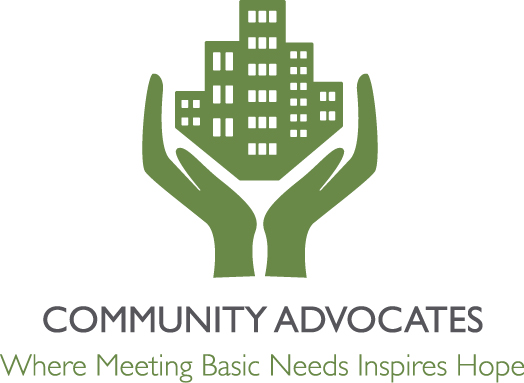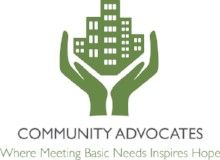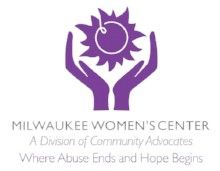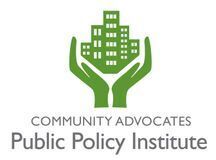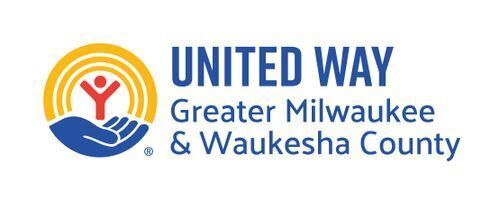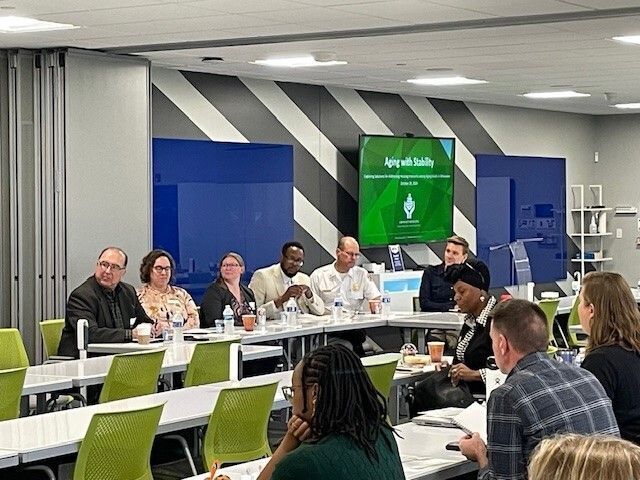
Nationally and locally, the number of adults ages 50 and up who experience homelessness and housing insecurity is increasing. To spark a conversation around aging adults’ health and housing experiences, Community Advocates convened the Aging without a Home symposium on October 29 at Direct Supply in Milwaukee on what is being done to improve these elders’ quality of life and how we as a community can provide better care for them.
The full room of participants was welcomed by Sharon Jordan, Direct Supply’s Community Relations Director who also serves as Community Advocates’ Vice Chair of the Board of Directors.
Aging Adults Struggling with Housing a Growing Issue
Trends indicate that the number of adults ages 50-plus experiencing homelessness or housing insecurity is increasing, in part due to the aging of the Baby Boom generation; the lack of affordable, appropriate housing for aging adults living on a fixed income; and health and mobility issues that make it difficult to find and maintain housing that enables an elder to age in place.
Adding to the complexity is that housing insecurity and homelessness can accelerate a person’s chronic, physical, and mental health issues. That means a 55-year-old who was living unhoused would have the same health conditions as someone 70 to 75 years old with secure housing.
For Community Advocates CEO Andi Elliott, the statistics are significant, but the honoring the human dignity and value of older people who are struggling to maintain housing is what’s important.
“Housing is a major social determinant of health. It’s also a human right,” said Elliott.
She recounted the experiences of an 80-year-old woman using a walker who was staying at an encampment in very poor living conditions. Community Advocates’ Supportive Housing Program staff worked to get her into temporary housing, but the experience compelled Elliott to take further action.
“We worked with our team to get her temporarily housed, but the myriad of issues that surrounded that situation got us to say, we need to work with our partners to really address this issue,” Elliott said. “This is just one person, but there are so many people in that situation.”
More Aging Adults with Complex Needs
The panelists offered their experiences working with homeless and housing insecure elders, as well as their views on how we can improve programs and systems to provide quality, stable housing that’s appropriate for aging adults.
Matt Raymond, Director of Community Advocates’ Supportive Housing Programs, said the organization provides a mix of programs and resources to enable those who have lived unsheltered to find temporary housing while they stabilize themselves and find a sense of community, and then to find permanent housing that offers independence plus case management that gives them additional support.
Community Advocates’ continuum of programs includes the Homeless Outreach Program, the Autumn West Safe Haven 20-unit apartment building for temporary housing, and the Autumn West Permanent Housing programs for adults who live independently in apartments with case management.
Raymond said aging adults are increasingly accessing Community Advocates’ supportive housing programs.
“At Autumn West Safe Haven, 10 years ago, 15% of our intakes were ages 55 and over,” Raymond said. “It has trended year after year higher and higher, where we are seeing that more than 33% of our clients coming in are ages 55 and up.”
Milwaukee Fire Department Chief Aaron Lipski said the MFD is increasingly being seen as a social safety net for aging adults who are trying to cope with their circumstances, whether they were displaced by a fire, are living unsheltered, or they’re in their home, but not getting the care they need. Sometimes a well-meaning bystander will call 911 to report someone sleeping on the sidewalk, and sometimes an elder will need help at home because their caregiver didn’t show up. The MFD responds.
For many years, the department didn’t report the number of people they helped—only the number of people who died as a result of fires. Chief Lipski now requires the department to track those numbers.
“There’s way more going on than people dying,” Lipski said. “There’s a whole ton of people who are starting down that slippery slope [of homelessness] right now, because they don’t have a fallback plan, they don’t have a safety net.”
Needing Connection, Safety, and Freedom
Dr. Bashir Easter said he founded Melanin Minded LLC to improve the health and quality of life of People of Color who are living with Alzheimer’s disease or dementia, which includes supporting their families and caregivers, as well as providing multigenerational programs that enable elders and youth to build connections and be integrated into the community.
Dr. Easter said the issue is more complex than simply moving an elder out of their home and into a living situation that addresses their disease. The decision to leave their home involves the family, their ability to care for their loved one, and the elder’s sense of dignity.
“You’re taking away their life and their freedom in a lot of those cases,” Dr. Bashir said.
Emily Kenney, Director of Strategic Initiatives and Transformation, Milwaukee County Department of Health and Human Services, said that while Milwaukee does have robust housing stock, it doesn’t include enough appropriate housing or the connection to services for aging adults. She said the annual Point in Time count of people living unsheltered, taken during one day in January, showed a 100% increase of people over 60 who live outside from 2023 to 2024.
“While homelessness, overall, we are addressing and we’ve seen our Point in Time numbers trend down, the percentage of older adults is increasing,” she said.
She said an Elder Justice grant recently awarded by the federal government can help the county prioritize the needs of aging adults who are struggling with their housing.
Bekki Schmitt, Director of the Aging and Disability Resource Center (ADRC), Milwaukee County Department of Health and Human Services, and Milwaukee County DHHS Aging and Disabilities Services, said the ADRC has received a significant surge in calls following the ending of COVID-19 pandemic-era programs from people who were disenrolled from their health coverage.
“People fell through the cracks,” Schmitt said.
She said the good news is that after years of advocacy, the state has increased funding for Milwaukee County’s ADRC, which will allow the center to add more staff and build a Community Health Worker team and enhance their technology.
Dr. Tom Lutzow, Principal, Health Management Associates, provided a presentation on what Medicaid can and cannot cover for aging adults with insecure housing. He said action would need to be taken at the state level to make changes to an existing Medicaid waiver, but that advocacy would be needed to show support for the waiver.

